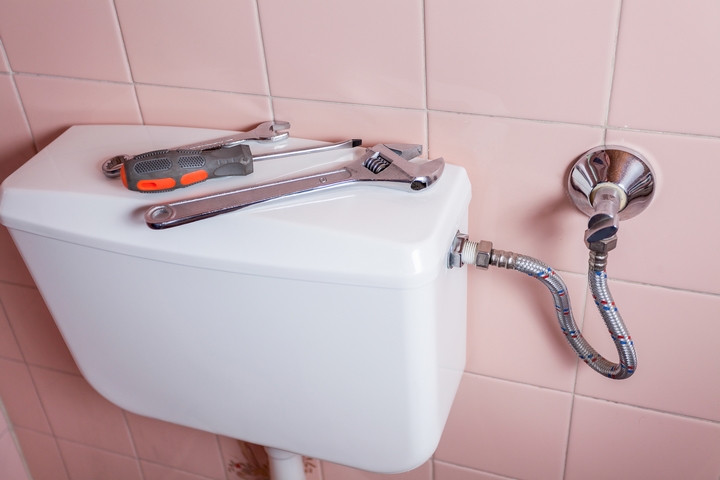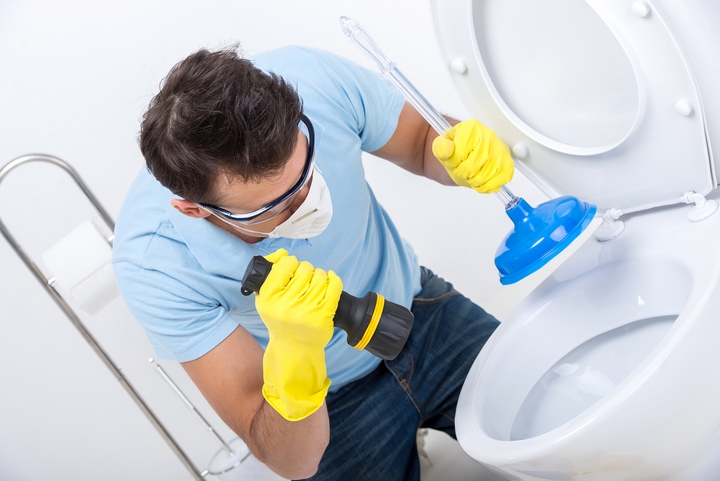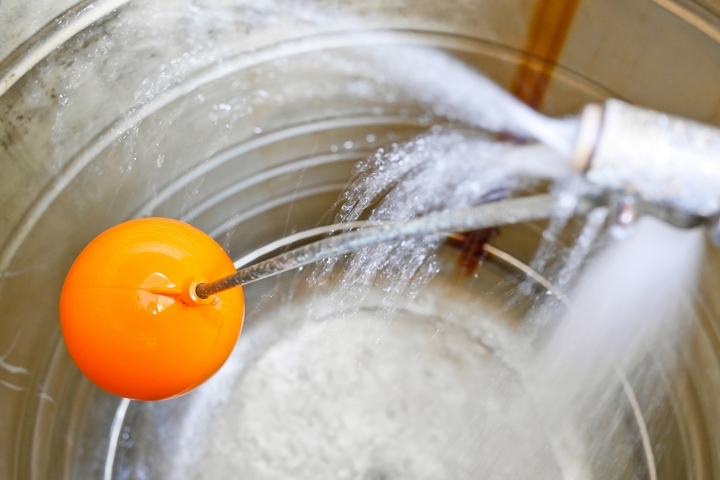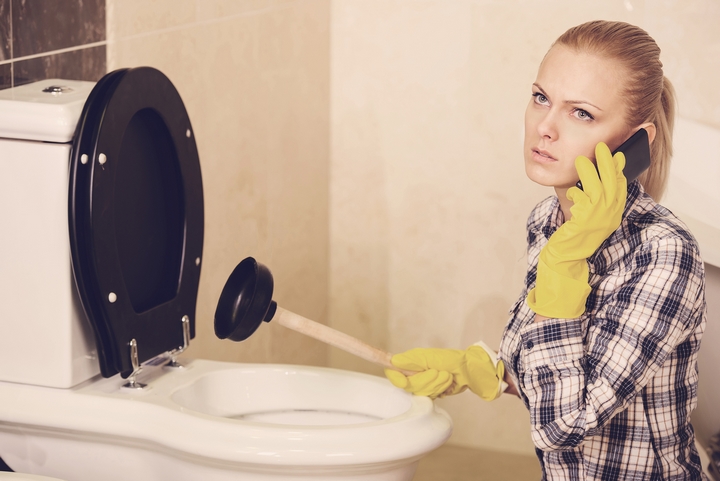There is nothing as common or as frustrating when it comes to plumbing as unclogging an overflowing toilet. Using a plunger and a little bit of skill though, learning how to unclog an overflowing toilet can be made simple.
Here is a simple tutorial teaching you how to unclog a toilet when nothing works:
Step 1: Stop the toilet from overflowing

Water rising to the brim of your toilet and slowly pouring over onto your bathroom floor can be overwhelming to watch. The first step towards fixing your toilet is to stop the overflowing. When a toilet’s overflowing, it’s usually because of one of two things – there’s either a blockage or something’s happened to your tank float mechanism which is used to regulate water flow.
Step 2: Turn off the toilet’s water supply

Assuming the mess is from a blockage, you can nip it in the bud right quick by turning off your toilet’s water supply. Most toilets have a supply line near the bottom side of the bowl. Find it and you’ll notice it has a valve. Turn this valve counter-clockwise and your water flow should stop. If this fixes your overflowing, skip the next step and read on.
Step 3: Turn off water to the house

If your toilet is still overflowing, the next thing to check is the tank cover. Lift the float ball high enough so that the water stops running. If that doesn’t work and if the water continues to run after this, you’ll need to shut off the water to the entire house. You’ll typically find the water supply in the basement, near your water heater. Your water supply is controlled by a valve or knob. Turn the valve until your water stops running.
Step 4: Removing excess water from the toilet

Even though you’ve stopped the overflowing toilet, you’re now left with a bowl of water and a dirty floor. If you’ve got rubber or disposable gloves, you’re going to want to put those on. Using a small cup or bucket, begin removing excess water by skimming the brim of the bowl. If the water’s clean, you can pour it in the sink. If it’s dirty, pour it in the tub or in a bucket. Be sure not to empty the whole bowl. Leave roughly half the toilet bowl full. This will assist with the next step in how to unclog an overflowing toilet.
Step 5: Plunge, plunge, and plunge again!

Align the rubber cup of your toilet plunger over the center of the hole of your toilet bowl. Apply downward pressure gently and slowly at first. Increase the speed and intensity, as you go. Although it might take some time to dislodge, if there’s a clog causing the overflow, correct plunging technique should work at clearing it. How you know it’s worked is simple. As the mass dislodges, this will allow water to escape through the plumbing.
Step 6: Pulling out your toilet blockage

If there’s a foreign object which has caused your clog, you’ll need to pull it out. A toilet auger works, as does a clothes hanger. After you’re done with the plunger, using an auger to ensure everything’s clear is recommended. To use an auger, insert the tube end as deep into the toilet as possible. Apply gentle pressure as you release the snake into the toilet.
As you’re applying pressure to release the snake, turn the auger simultaneously. Now, if you feel any pressure or resistance, pull the auger out of the hole. Doing this a few times, you should know a clog’s been removed.
Step 7: Double-check your float mechanism

After everything’s cleared, turn your water back on. Flush the toilet. Check the float mechanism in the tank to ensure it sits correctly. Ensure the chain is not tangled. At this stage, everything should be in order.
Step 8: What to do if your toilet keeps clogging

If you’re experiencing chronic clogging, you absolutely must contact a plumber to come and inspect. A professional plumber will be able to examine your external plumbing vents to ensure there’s not a blockage happening there. They’ll be able to determine what the cause of your overflowing or blockage is and they can provide information on what the most appropriate solution is.
Step 9: What to do if your toilet’s overflowing soiled water

If you’re experiencing issue after issue or if you’re seeing soiled water overflow from your toilet, sewer backup might be the problem. If your home uses a private septic tank, you will need a plumbing company to come and flush your system. Please note that it’s best not to handle sewage yourself. Contact a professional to come and assist.
It’s normal for toilets to become clogged over time. Low water pressure, attempting to flush too much at once, or something else clogging the pipe is common. If you’re unsure about why your toilet’s clogging and/or overflowing, contact an experienced professional plumbing company. A plumber can assess the situation, determine the issue, and find the most appropriate solution.



